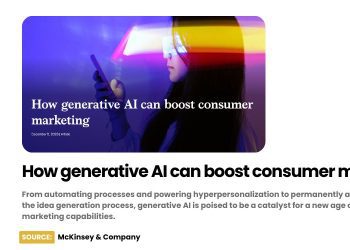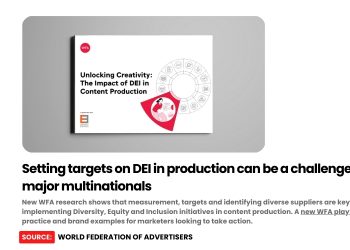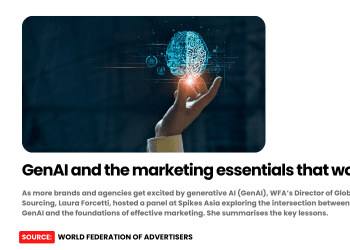Global Alliance for Responsible Media launches solutions to improve digital safety
Davos, 22 January: The Global Alliance for Responsible Media (GARM) has unveiled its strategy to create a moresustainable and responsible digital environment that protects consumers, the media industry and society.
Between July and September 2019, an estimated 620 million pieces of harmful content were removed by YouTube, Facebook and Instagram. Because of the platforms’ investments in teams and tools, the majority of this content was removed before consumers actually saw them. However, approximately 9.2 million pieces of harmful content still reached consumers during that 3-month period, equating to roughly one piece of harmful content viewed per second[i].
The GARM is taking action in a collaborative approach to protecting the four billon consumers online today, with the goal of eliminating harmful online content and ensuring that bad actors have no access to advertiser funding. The GARM has partnered with the World Economic Forum to advance this goal of improving the safety of digital environments. GARM has joined the Forum’s Platform for Shaping the Future of Media, Entertainment and Culture as a flagship project.
The Alliance was launched in June 2019 by the World Federation of Advertisers (WFA) in partnership with its US member, the Association of National Advertisers (ANA). The initiative continues to be driven by WFA and brings together an unprecedented coalition representing $97 billion in global advertising spending through 39 advertisers, six agency holding companies, seven leading media platforms and seven industry associations.
The coalition will accelerate progress by means of a three-pronged action plan starting June onwards:
Shared definitions: The Alliance has developed and will adopt common definitions to ensure that the advertising industry is categorizing harmful content in the same way. The 11 key definitions covering areas such as explicit content, drugs, spam and terrorism will enable platforms, agencies and advertisers to a shared understanding of what is harmful content and how to protect vulnerable audiences, such as children. Establishing these standards is the first step needed to stop harmful content from being monetised through advertising.
Common tools and systems: The Alliance will develop and adopt common tools that will create better links across advertiser controls, media agencies tools, and the platform efforts to categorize content. Creating these linkages will improve transparency and accuracy in how media investments are steered towards safer consumer experiences – in images, videos and editorial comments.
Independent oversight: The Alliance will establish shared measurement standards so that the industry and platforms can fairly assess their ability to block, demonetize, and take down harmful content. Transparency via common measures, methodology for advertisers, agencies and platforms is key to guiding actions that enhance safety for consumers. Adopting key measures and agreeing to independent verification will be key to driving improvement for all parties, which we will look to track annually. A special working group from the GARM will be activating this strategy starting in April.
This new strategy is a major step forward to accelerating and integrating important efforts on improving safety across the media supply chain. The long-term vision is to drive growth and connectivity for society on ad-supported media platforms, which foster and enable civil dialogue. Going forward, GARM is committed to taking further bold steps which represent the industry’s unique contribution to the challenge of eliminating harmful content, complementing the approaches that have been taken by governments and online platforms.
The announcement was made today as part of a World Economic Media Leaders session in Davos entitled “Business Leaders Act to Eliminate Harmful Online Content: Global Alliance for Responsible Media launches solutions to Improve Digital Safety”, featuring Procter & Gamble Chief Brand Officer, Marc Pritchard, Carolyn Everson, CVP, Global Ad Sales & Strategy at Facebook, Leena Nair, Chief Human Resources Officer at Unilever, YouTube CEO, Susan Wojcicki and IPG CEO, Michael Roth.
“Advertisers can play a unique role in improving the digital ecosystem that we all want to enjoy. Given that brands fund many of the platforms and content providers, we can ensure society gets the benefits of connectivity without the downsides that have sadly also emerged. These first steps by the GARM are a significant move in the right direction, which will benefit consumers, society and brands. I’m delighted that the WFA has played such a key role in corralling the different actors of the digital ecosystem behind such a compelling common action plan,” said Stephan Loerke, WFA CEO.
“It’s time to create a responsible media supply chain that is built for the year 2030—one that operates in a way that is safe, efficient, transparent, accountable, and properly moderated for everyone involved, especially for the consumers we serve. With all the great minds in our industry coming together in partnership with The Global Alliance for Responsible Media, we can and should avoid the pitfalls of the past and chart a course for a responsible future,” said Marc Pritchard, Chief Brand Officer at P&G.
“The aim of our media investment is to be a force of good for our purposeful brands and society at large. That’s why we have established and implemented the Unilever Media Responsibility Framework which advocates responsible platforms, content and infrastructure. We are encouraged by the progress we have made scaling our efforts and working together with the industry under the Global Alliance for Responsible Media to address the current complex challenges. The consistency created by aligning the industry definitions, tools, and measurement is another step in our journey to create a better, brighter, safer and more trustful digital ecosystem for brands and society,” said Luis Di Como EVP Global Media, Unilever
“Digital media has fundamentally reshaped the way we connect with the world, and yet harmful and hateful online content has the power to tear us apart. By driving collective action across the industry and developing safeguards to ensure advertising budgets aren’t fuelling harmful content, we’re striving to create safer online communities to protect consumers,”said Jane Wakely, Lead CMO for Mars Incorporated.
“When the Alliance launched in Cannes, we recognized the uncommon collaboration that would be required to make a meaningful impact on reducing harmful content online. The Alliance has made tremendous progress with a strong action and plan, and it’s vital this momentum continues. GroupM are proud to lend our full support,” said John Montgomery, Global EVP Brand Safety, GroupM.
“Responsibility is our number one priority, and we’ve made significant progress towards building a more sustainable and healthy digital ecosystem for everyone,” said Susan Wojcicki, CEO of YouTube. “Finding a shared understanding of how to identify and treat harmful content in a consistent way is an important step towards achieving this goal, and we welcome the progress GARM has made.”
“Safety for people and businesses is the top priority for Facebook, and we’re encouraged by the progress the Alliance and industry have made in these areas. Our commitment to safety and partnering across the industry is unwavering, we look forward to continuing the progress with our peers,” said Carolyn Everson, VP Global Marketing Solutions, Facebook.
“Previous approaches to harmful content have been in part a reactive game of whack-a-mole. We are convinced this uncommon collaboration is what is needed to change the game. Since our launch in June, we’ve made significant progress to raise the bar in terms of identifying and eliminating content uploaded by bad actors, for the benefit of brands, people and society at large,” added Rob Rakowitz, Initiative Lead for the WFA Global Alliance for Responsible Media.
“Digital platforms have created exciting environments for billions of users to easily share ideas globally. Just the immense volume of content and comments posted every hour necessitates society to collaborate on defining what new policies are appropriate. Incorporating AI and machine learning become imperatives as well as continually incorporate human valuation to police and improve safety to reduce the harm these platforms can inadvertently create at great scale. Publicis Media supports the Global Alliance for Responsible Media (GARM) because this initiative engages platforms, agencies, marketers and industry bodies to collaborate and quickly influence responsible safe algorithms and policies” said Helen Lin, Chief Digital Officer, Publicis Media.
“We have no greater responsibility as marketers than to insure that our brands are featured, promoted and placed in environments that uphold their essential credibility and integrity. The Global Alliance for Responsible Media powers the international marketing community with the capabilities needed to navigate the sometimes uneven media terrain. We should all be pleased that our ecosystem connected quickly to address this fundamental issue in as responsible, comprehensive way as possible. As the future unfolds, GARM will provide the assurance that our industry will be focused on elevating our standards and protocols to diminish the risks of unsafe brand environments,” said Bob Liodice, CEO, Association of National Advertisers.
“Twitter is committed to helping increase the collective health, openness, and civility of public conversation” says Sarah Personette, VP of Client Solutions at Twitter, “and we’re proud to collaborate with our peers on this important work. Developing shared frameworks and protocols will help the industry hold ourselves publicly accountable towards progress.”
About the Global Alliance for Responsible Media
The Global Alliance for Responsible Media was formed to identify specific collaborative actions, processes and protocols for protecting consumers and brands from safety issues. Alliance members will work collaboratively to identify actions that will better protect consumers online, working towards a media environment where hate speech, bullying and disinformation is challenged, where personal data is protected, and used responsibly when given, and where everyone is, especially children, better protected online. Alliance members acknowledge their collective power to significantly improve the health of the media ecosystem.
The Alliance was founded by World Federation of Advertisers members and will be also championed by the ANA CMO Growth Council, a member organization of the WFA. This effort enlists:
- Advertisers including Adidas, Asahi Beer, Bank of America, Bayer, Beiersdorf, BP, Chanel, Danone, Diageo, Discover, EA, Ferrero, Fiat Chrysler, Friesland Campina, General Mills, GM, GSK, Hershey, HP, Johnson & Johnson, Kellogg, LEGO, LVMH, Mars Incorporated, MasterCard, Microsoft, Mondelez International, NBC Universal, Nestle, Orange, Procter & Gamble, PepsiCo, Pernod Ricard, Philips, Shell, Sony, Unilever, Vodafone, Yildiz Holdings and Yum! Brands;
- Experts at Dentsu, GroupM, Havas Media, IPG, Publicis Media, and Omnicom Media Group, representing media agencies;
- Media companies and platforms at launch include Facebook, Google/YouTube, Teads, TRUSTX, Twitter, Unruly, and Verizon Media; and
- Supporting industry associations ANA, 4A’s, Interactive Advertising Bureau, ISBA, Mobile Marketing Association, Coalition for Better Ads, Effie Worldwide and the WFA alongside their local advertising association members.
Learn More at www.wfanet.org/garm








